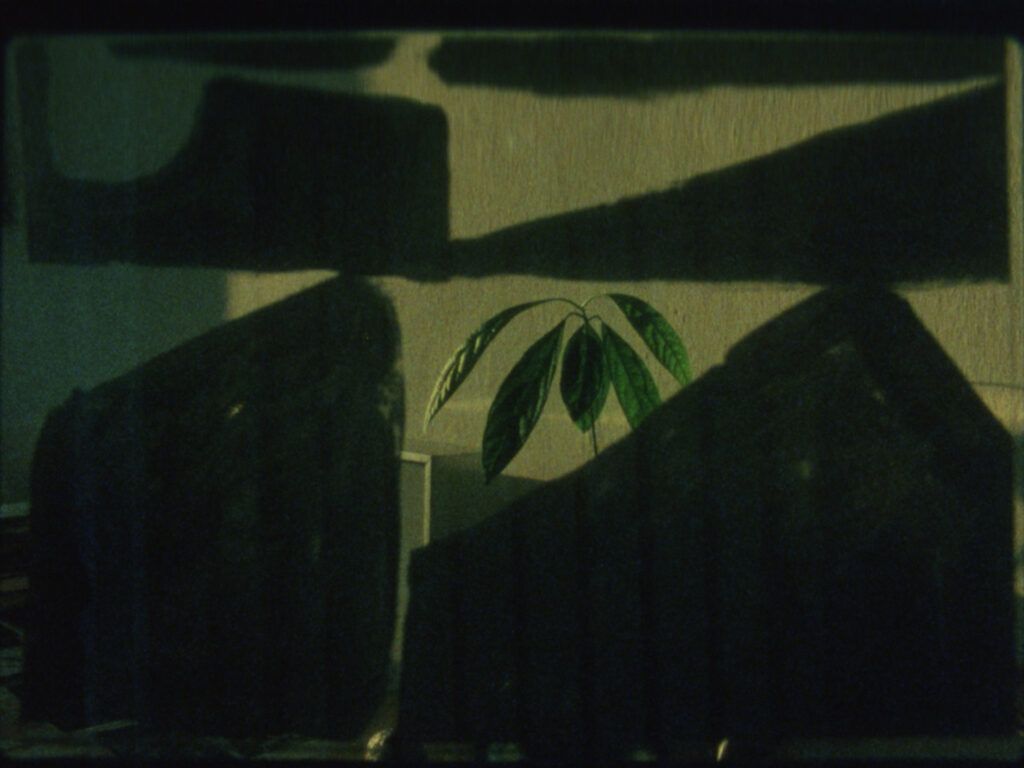A Return is a film that makes the concept of return its raison d’être. His creation is, in fact, given by the alternation of footage of two different places that the director has impressed on film and that he overlaid according to criteria that could be defined as harmonic/musical rather than logical-syntactic. It is not difficult to have the sensation to be in front of what Jonas Mekas called “glimpses of beauty”, yet there are differences in the way in which these two directors relate to their personal “glimpses”.
In films such as Reminiscences of a Journey to Lithuania, the subject (Mekas) is external to the object (the house) and contemplates it with a sweetness and sincerity proper to the Lithuanian director, who remains abstract (his off-screen speaking is a clear one exemplification) in the very idea of using cinema as a blank sheet on which write about memories and thoughts. Here, then, his old house is a goal, something on which to focus from the outside. In A Return, on the other hand, the director is on the inside and looks outwards, his gaze projected from the house towards what lies beyond the window, the aestheticization is also intrinsically given by the form and not “attributed” to the content. In other words, the aesthetic of the “glimpses of beauty” of Edmonds differs from those of Mekas in the will to assemble “glimpses” poetically intense a priori and not made such by something that is linked to them (in the case of the second director that “something” is given by the awareness of his position towards what is taken up, awareness given by the famous writings that appear in his films and by his practice of “lyricizing” memories and thoughts).
The places of A Return transmit – in their exchange and mixing – the warmth and beauty of a nest, the faces of loved ones, animals, trees, skies: everything is home, everything is a single atmospheric representation of dwelling and proximity.
The relationship between the two places in which the film fragments were shot is interesting as an alternation and overlaying of two macro-aspects of the image: the geometric-linear one and the pictorial-sfumato one. What in fact differentiates the two locations is the director’s choice to reproduce structural elements and natural elements in the transition from Berlin to the south of England, weaving them and creating completely new forms, now angular, now curvilinear, finally merged to create a new house.
This (re)alignment of images is nothing but a mixture of suggestions sedimented in memories, a common process that concerns memory and that leads to the re-elaboration – clearly distorted – of a place that is not what it really is, and that at the same time it is what it is (the poetic truth of memory consists precisely in its opacity).
In the artist’s eyes the world is exactly the one in the works, with his personal rules and schemes. Returning to the Mekas-Edmonds comparison it is possible to clarify further the question concerning their perception of things around them.
The first one observes the world in a completely natural way (where “natural” means the mechanical representation given by the camera) and yet – here is the pleasant paradox of the director’s cinema – gives to its viewer an extremely unique and personal vision, modulated and artistically formed after the shooting and before the completed film; the second starts from a vision that is aesthetically realized in the frame itself, created by him in the moment of shooting, poetic in its completeness and realized in the symphony staged in the completed film. It could be said, remaining in the musical sphere, that the cinema of Mekas is composed of songs and that of Edmonds by instrumental pieces.
The most complete expression of this musical idea of the film is perhaps the choice of using as a soundtrack the sound of a river that meets the sea, one of the most powerful scenes to which one can think in relation to the idea of overlaying and natural interweaving of images: it is precisely in this way that the fragments of the film follow one another, according to a purely instinctive and “natural” logic, as if the images were attracted to each other and the director’s task was only to satisfy this tension/attraction. The return home is, in this case, a non-physical journey (as has been said about the position of the director towards the places that have been filmed – he looks at everything from the inside. He is already at home, basically) mnemonic and evocative, in which mathematics and poetry dialogue with each other and finally converge: Mondrian and Kandinsky, Ghiberti and Brunelleschi, Policleto and Fidia, Bach and Händel. A Return is a symphony of «two worlds become one».






